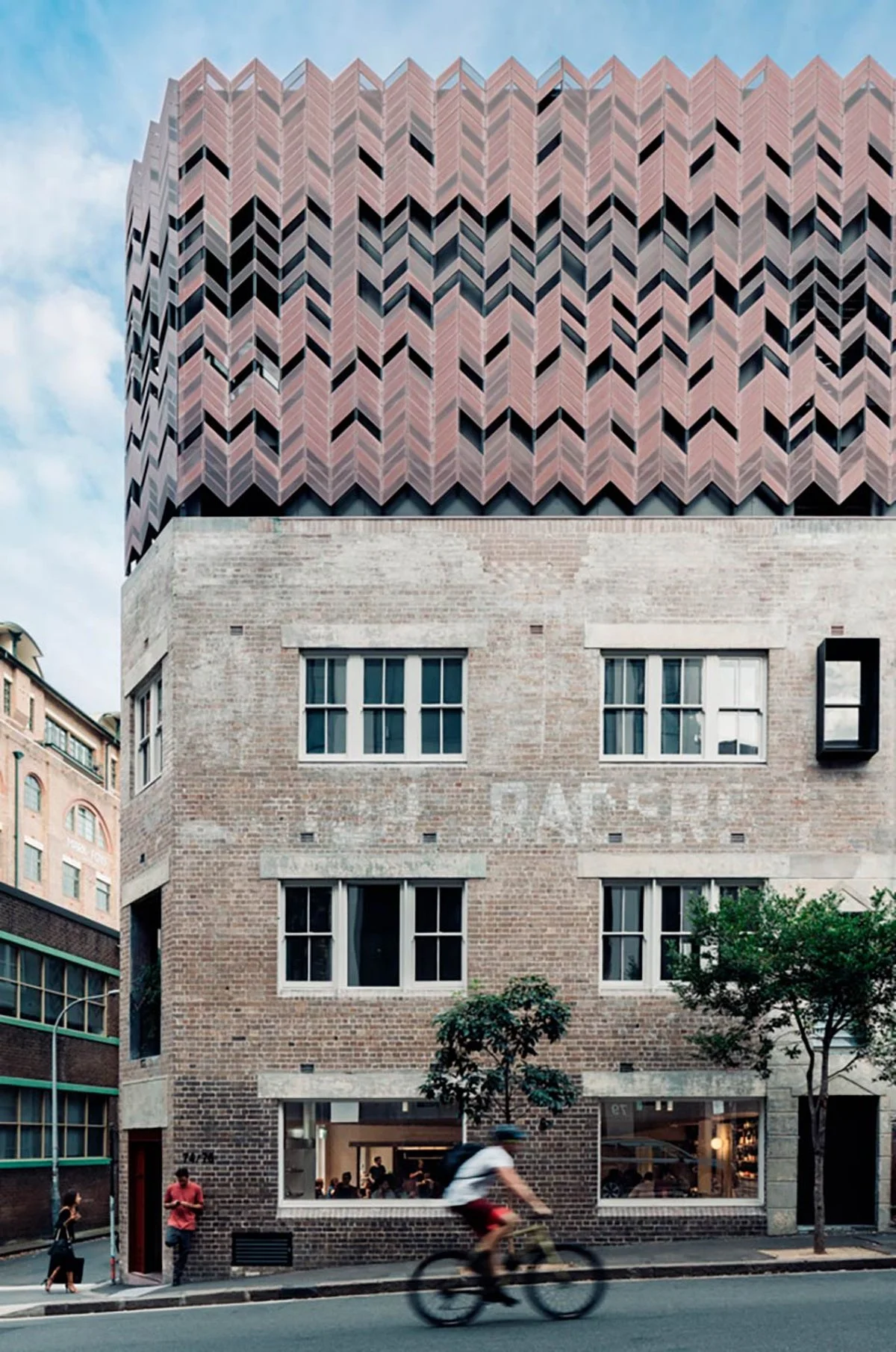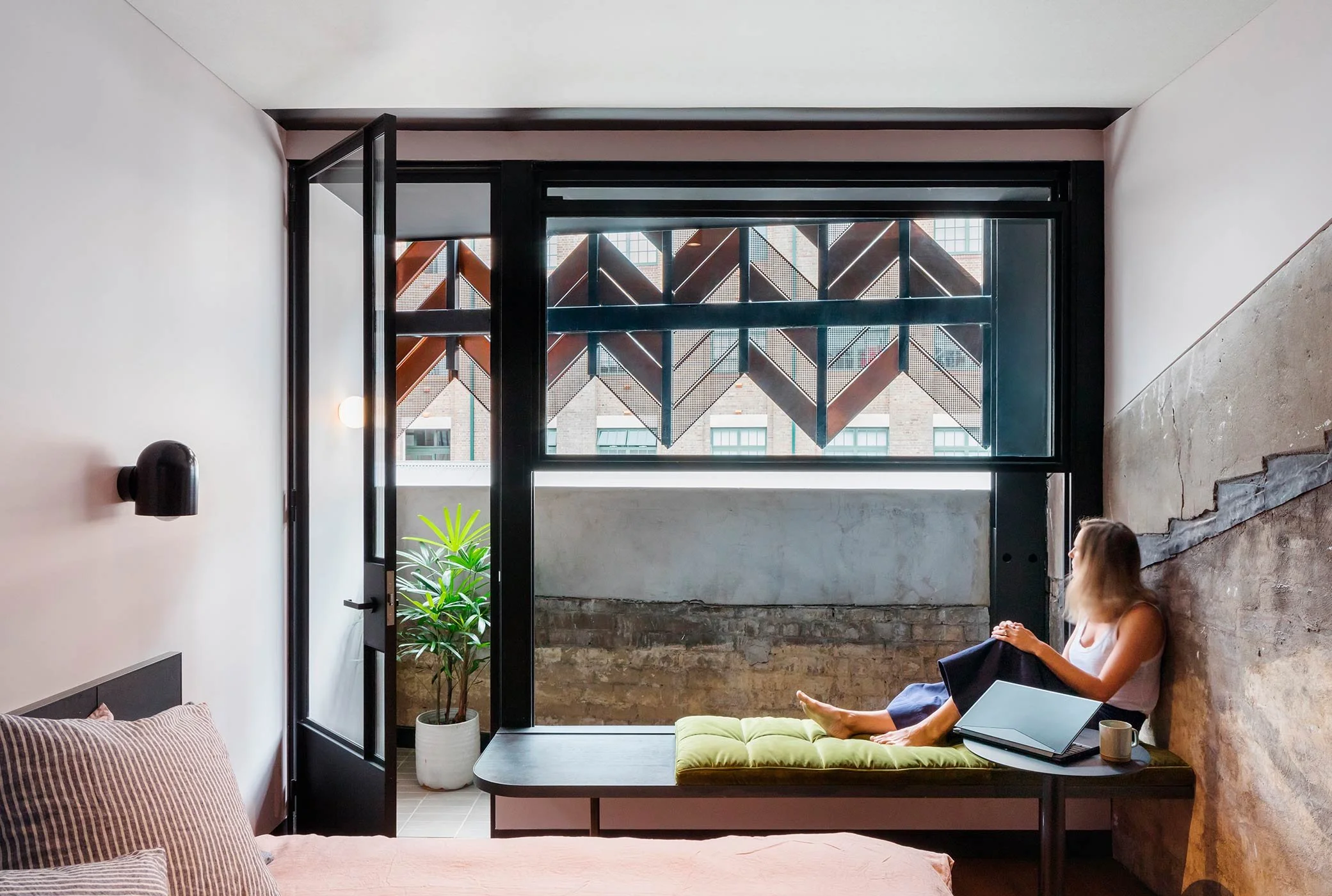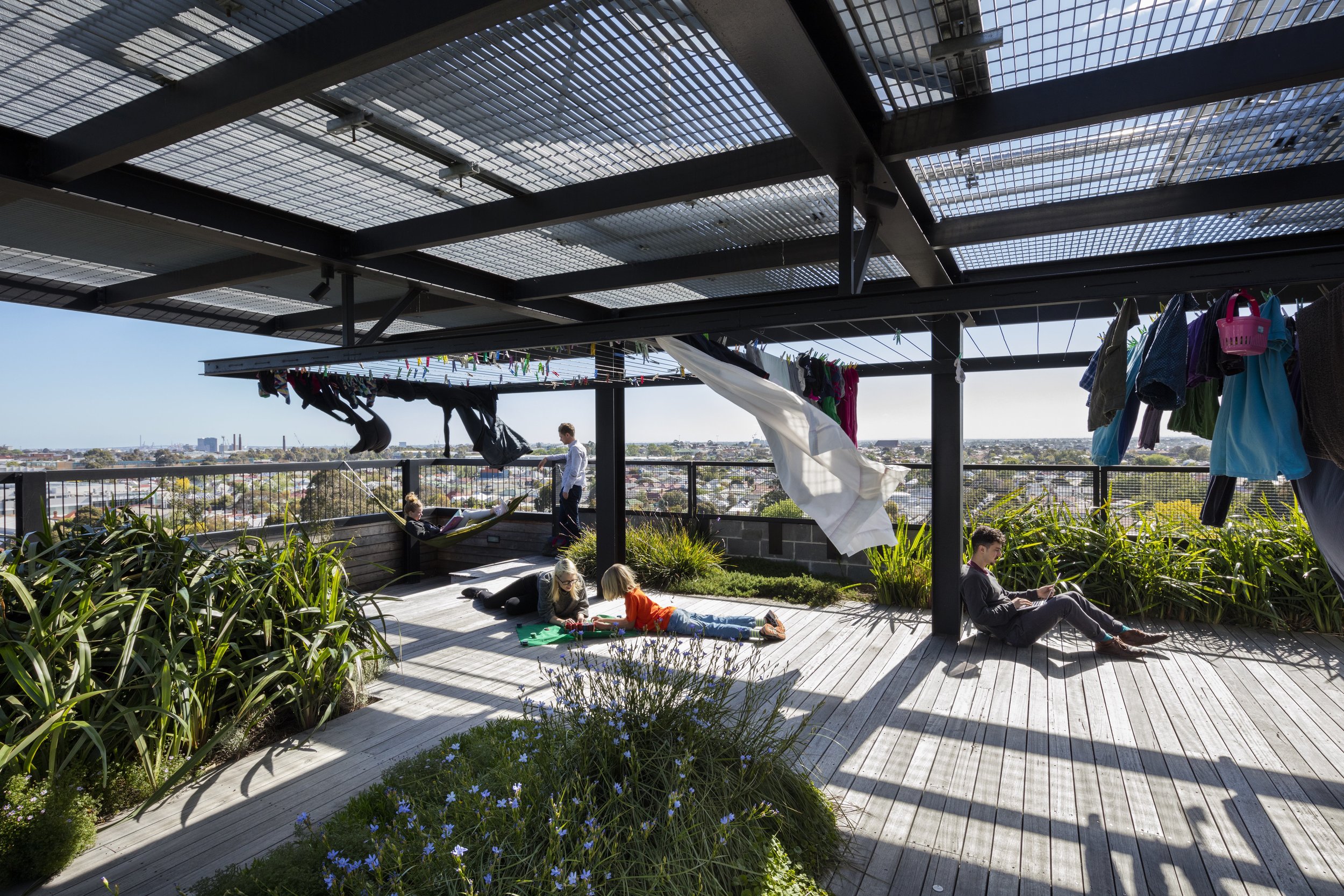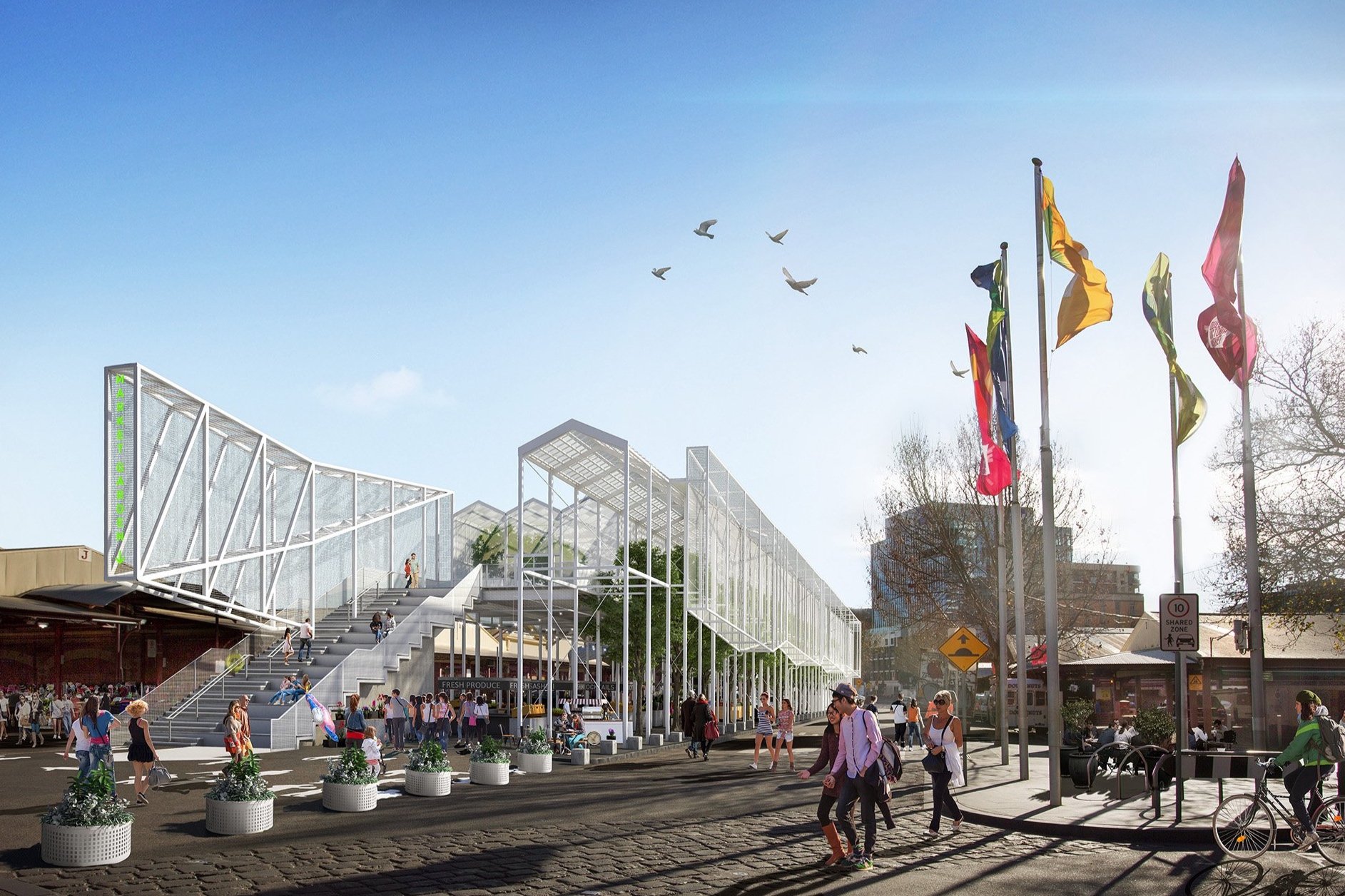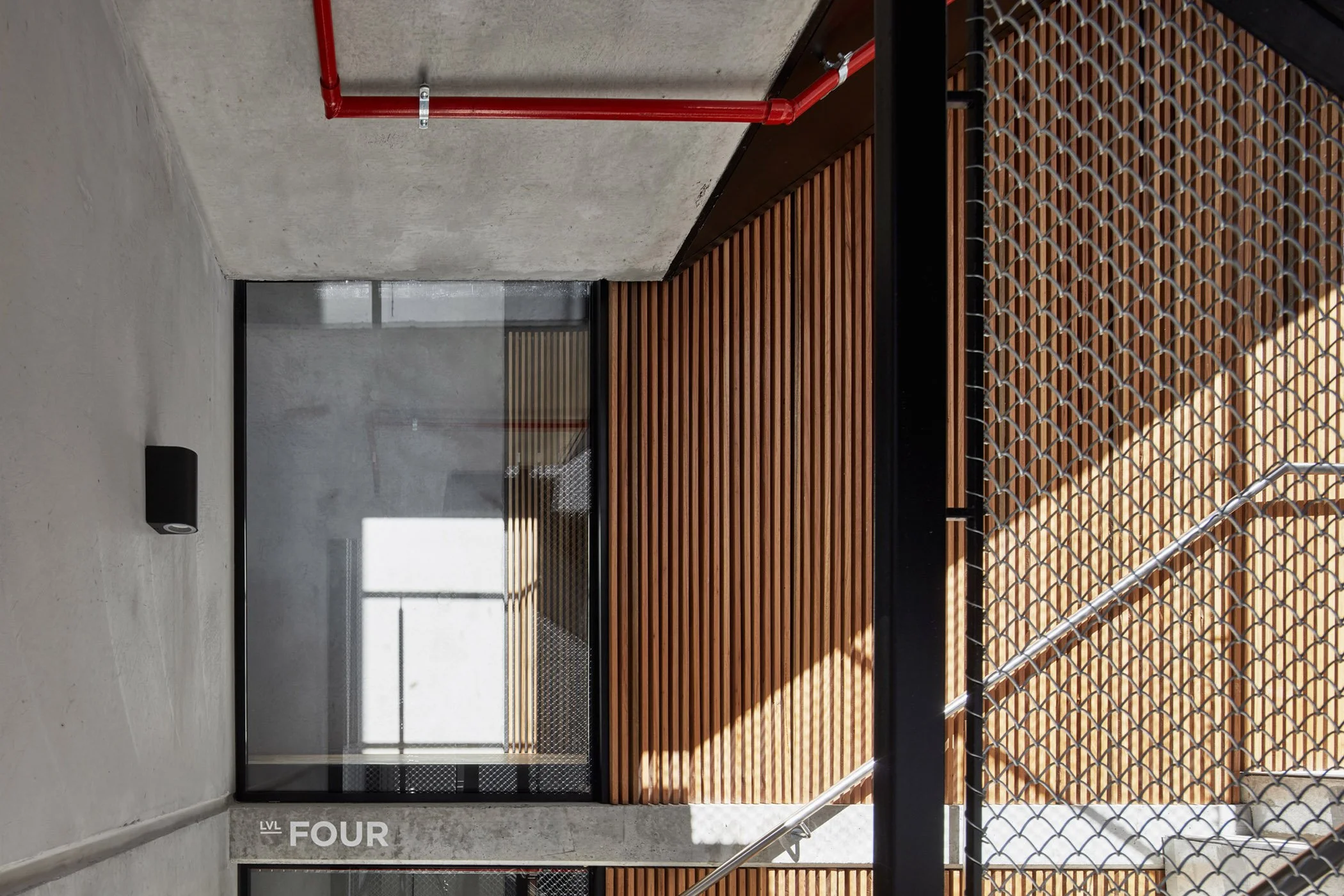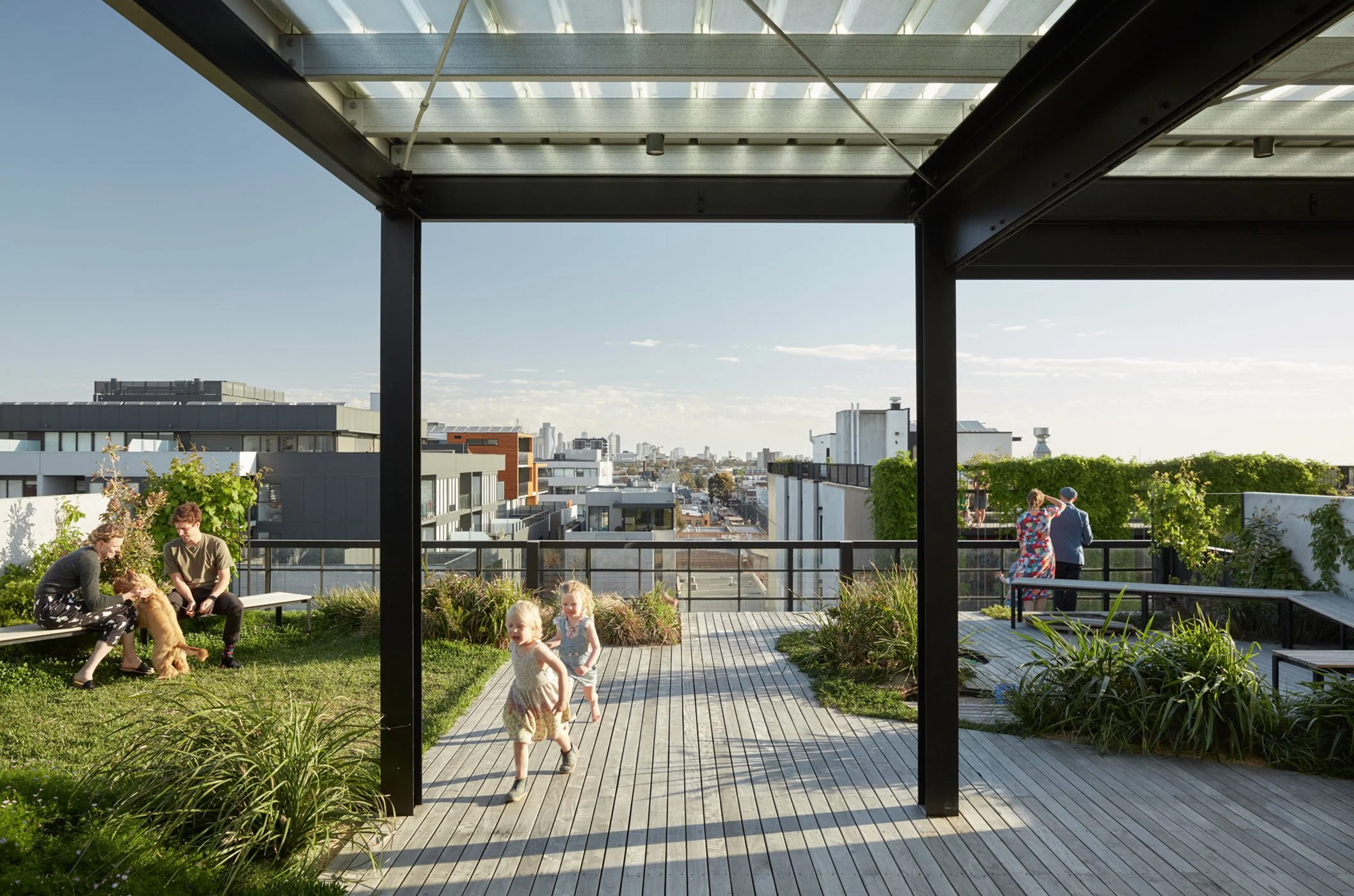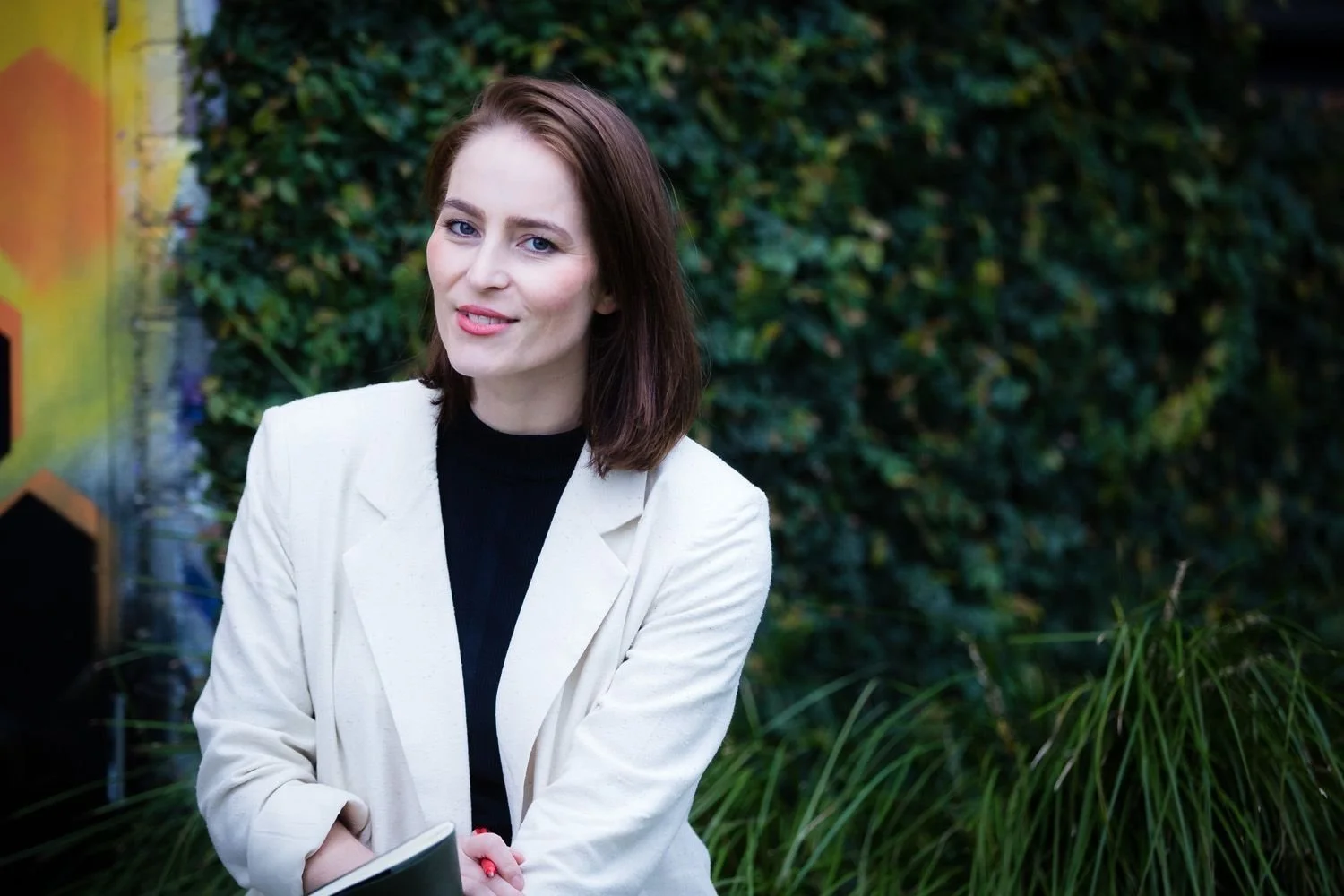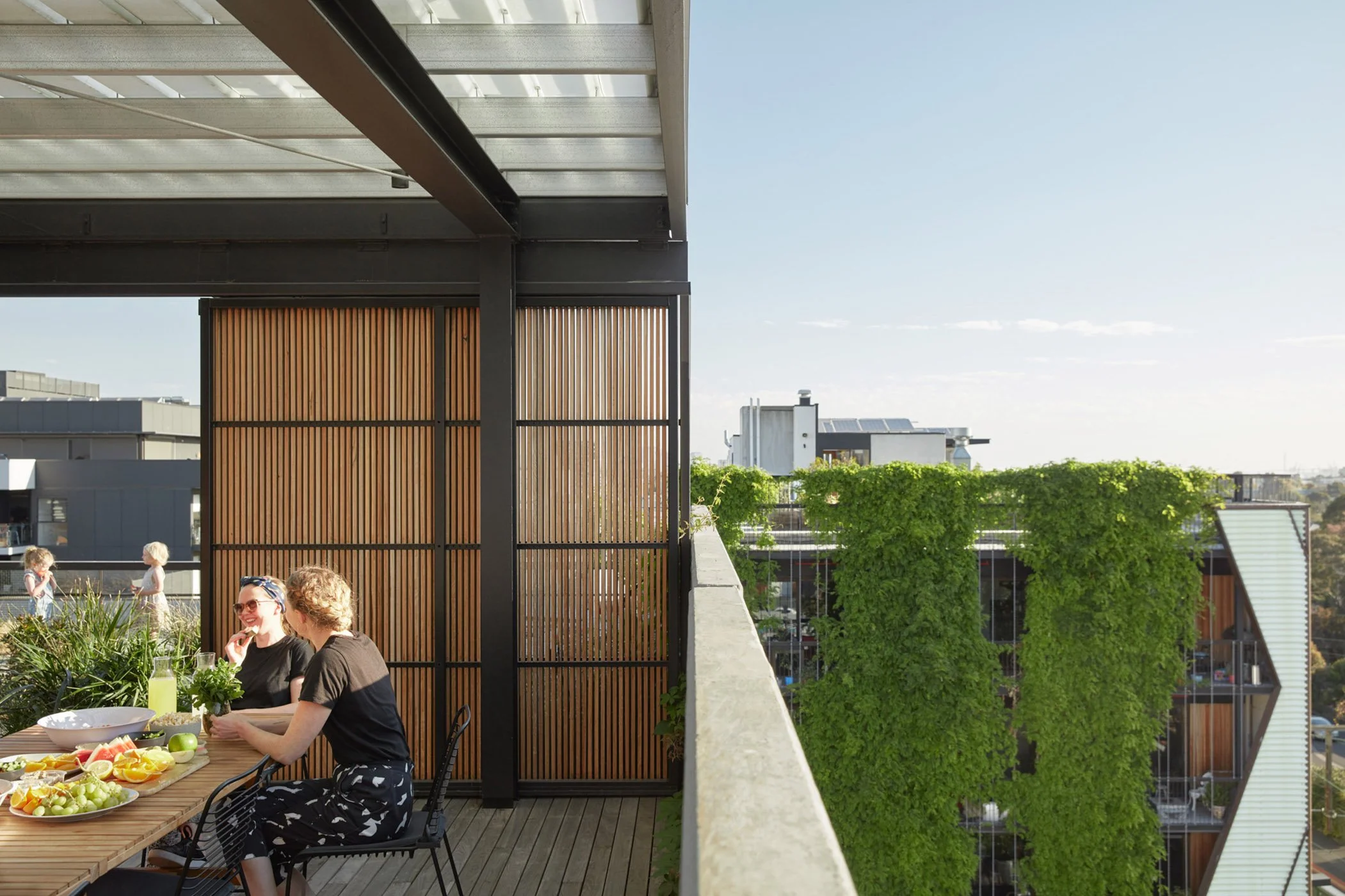Bonnie Herring
Architect
Bonnie Herring, Director of Sustainability, Breathe. Photo: Kate Longley
Interview by Peter Salhani | photography Peter Clarke, Kate Longley, Katherine Lu, Tom Ross, Dianna Snape
As Director of Architecture & Sustainability at Breathe, a carbon neutral architecture practice in Melbourne, Bonnie Herring was shortlisted for a Women in Sustainability Award in 2021. She talks about her role at Breathe, creating The Commons – progenitor of Nightingale Housing*, which puts people ahead of profit.
what do you do and how did that happen?
As Director of Sustainability at Breathe, I mentor and support the team, and drive our practice values to sustainable and ethical ends across all projects.
How did women come to define breathe’s direction?
It happened organically. Women are highly visible – about 80 percent across the practice – but also in the leadership roles, which is historically unusual in architecture.
Does the gender balance influence project outcomes? Do women & men design differently?
That’s hard to measure, but perhaps it’s reflected in the rigour – particularly in our female-led interiors team – around designing for families, and for a broader range of life stages and experiences.
Paramount House Hotel in Sydney by Breathe. Photo: Katherine Lu
“Women are highly visible across the practice, but also in the leadership roles, which is historically unusual in architecture.”
What other diversity barriers is Breathe taking on or breaking down as a practice?
Our process increasingly includes cultural considerations – both in recruiting and also in the work. We jump at the opportunity to engage with local Indigenous councils and consultants, to drive richer and culturally appropriate design responses. An example of this is a collaboration with local elders on the design narrative and naming of a collection of new Nightingale Housing* communities being built on Wurundjeri land. We’re also working with Aboriginal Housing Victoria on a project. These kinds of collaborations remind us of the great creative value of inclusive thinking.
Paramount House Hotel in Sydney by Breathe occupies the top floor of the famous former film studio building in Surry Hills. Seen at street level is the restaurant Poly, with interiors by Anthony Gill Architects. Photo: Katherine Lu
a game-changer moment for you?
Taking on the role of Project Architect for The Commons (the prototype for Nightingale 1*) as it was coming through planning. That was pivotal for our practice direction. We aimed high with that project. The design strategy reflects our office mantra of “build less, give more”. After completion, we got a lot of calls asking why we made certain design choices and would we make those again? One example was removing individual laundries from apartments to combine them as one beautiful shared laundry on the rooftop, where residents meet each other while doing the washing. It’s a levelling social experience. So it was great to see the market ask questions and shift its expectations around what is essential to the success of certain types of housing.
Paramount House Hotel in Sydney by Breathe. Photo: Katherine Lu
You were young to be Project Architect on The Commons?
Yes, at that point I didn’t have experience working at that scale. And at the time, our small practice had limited multi-residential history. But in a way, it was liberating. Fronting up to meetings with a large consultant team of mostly men was a challenge, but by boldly asking fresh questions enabled us to pull a lot of unnecessary things out of the picture – things that were just the status quo, eg: air-conditioning, individual laundries, chrome tapware (carbon intensive).
The Commons in Brunswick (Victoria) by Breathe, the progenitor of Nightingale Housing. Photo: Tom Ross
“challenging the status quo often puts us in a place of risk.”
The Commons in Brunswick (Victoria) by Breathe was a game-changer for housing. Photo: Dianna Snape
What’s your relationship to risk?
One of our core values at Breathe is about challenging the status quo. And often that puts us in a place of risk. You hope it’s not serious risk, but sometimes you’re trying to chart a course and make it look easy, even though you’re out on a limb. I think even developing the blueprint for Nightingale Housing* was a risk. Time spent innovating in the development space is not the usual domain of architects.
How do you view success or failure?
Success is doing something like influencing a market change for the better. There was a risk Nightingale 1* wouldn’t work, but seeing more all-electric buildings coming online, and knowing that consumers are asking for it now is a huge win. It means the industry is is changing. I’d call that a success.
QVM Market Garden, a speculative collaboration with Breathe, Joost Baker and Openwork. Visualisation: Sharp
“We no longer take on commissions that tie users to a gas-fuelled future.”
Why all-electric buildings?
My favourite topic: the all-electric building! Globally, the construction industry is responsible for almost 40 percent of emissions. The majority of that is operational carbon, so how you power your building is critical. One of the biggest things we can do to reduce that is to not use gas or other fossil fuels to run our buildings. Nightingale 1* was one of the first all-electric apartment buildings in Victoria. We no longer take on commissions that tie users to a gas fuelled future.
How do you push big changes through in such a short time?
Sheer determination and strategic thinking. Tenacity is actually a stated requirement when we’re recruiting people.
Nightingale 1 in Brunswick (Victoria) smashes sustainability ratings with a mantra of “Build less, give more”. Photo: Peter Clarke
Your toughest lesson?
Perspective. I’m a struggling perfectionist, but I’m starting to realise it’s about progress – not perfection. So that’s an ongoing lesson in keeping things moving in the right direction.
Where do you live?
Currently in Nightingale 1*, Brunswick, Victoria. I’ve just spent the better part of 260 days locked in this apartment as a new mother, and I got to experience the community supporting me. It’s a testament to this community, and the power of the building as a facilitator.
Nightingale 1 in Brunswick (Victoria) community focused apartment design. Photo: Tom Ross
What keeps you awake at night?
Worrying about the future. Having a child is quite frightening in the current global context of climate change, biodiversity loss and conflict, because it’s her lifetime we’re bargaining with right now.
What would you most like to change?
Of course I want to find ways to arrest climate change and create a regenerative society that’s fairer, kinder and more productive – for all of us. Within my sphere of influence, that means working on great projects.
Sometimes it’s not about the built work.
It’s also about advocacy, or a provocative installation, or lobbying council for a pocket park. Macro to micro.
“We are advocating for net zero carbon for all our projects by 2030. ”
Nightingale 1 in Brunswick (Victoria) community focused apartment design. Photo: Tom Ross
What’s next?
In 2022 the focus at Breathe is on life cycle design, considering materials from extraction and processing through to disposal and reuse. We are advocating for net zero carbon for all our projects by 2030. We’re also finalising our practice certification under the B Corp process. It’s a process that measure’s Breathe’s entire environmental and social impact. It’s going to be a great year!



